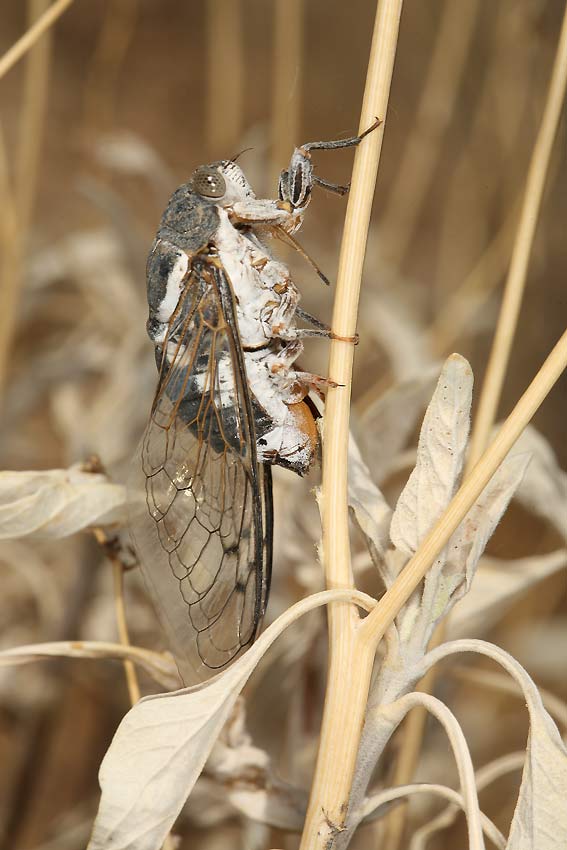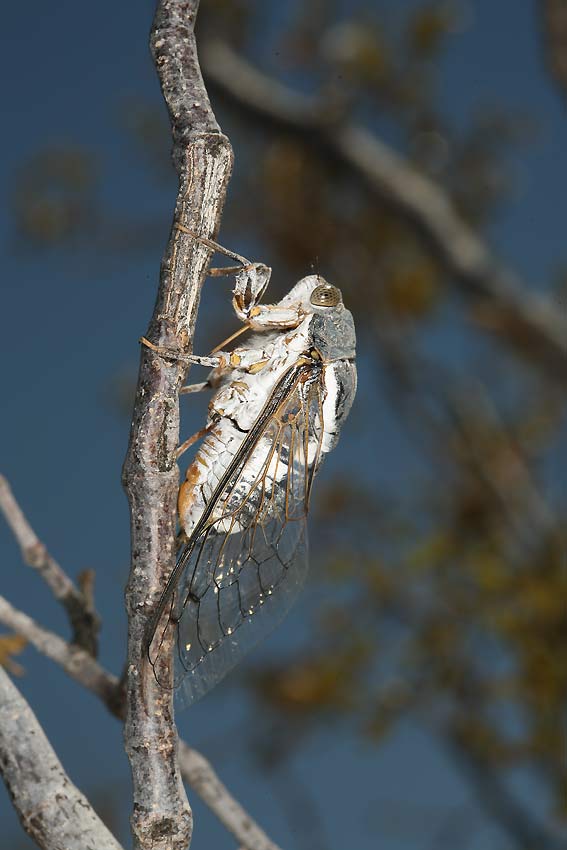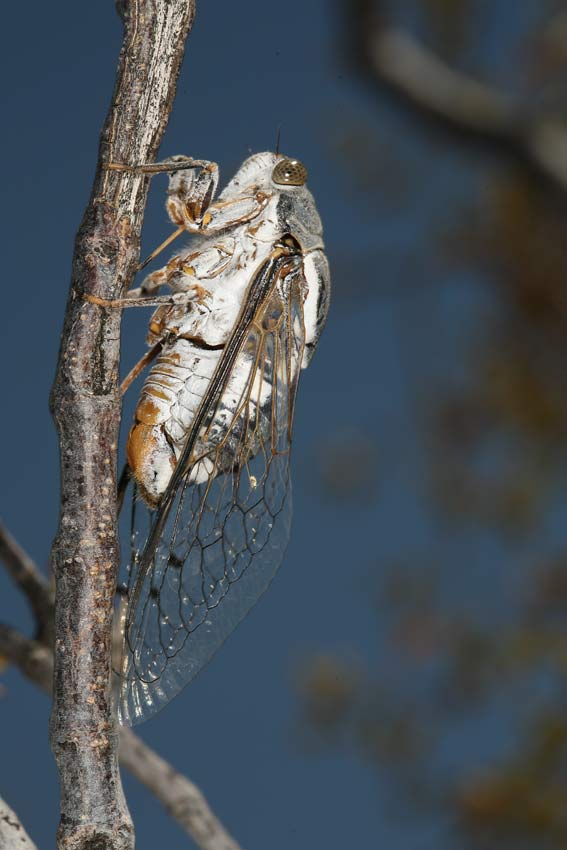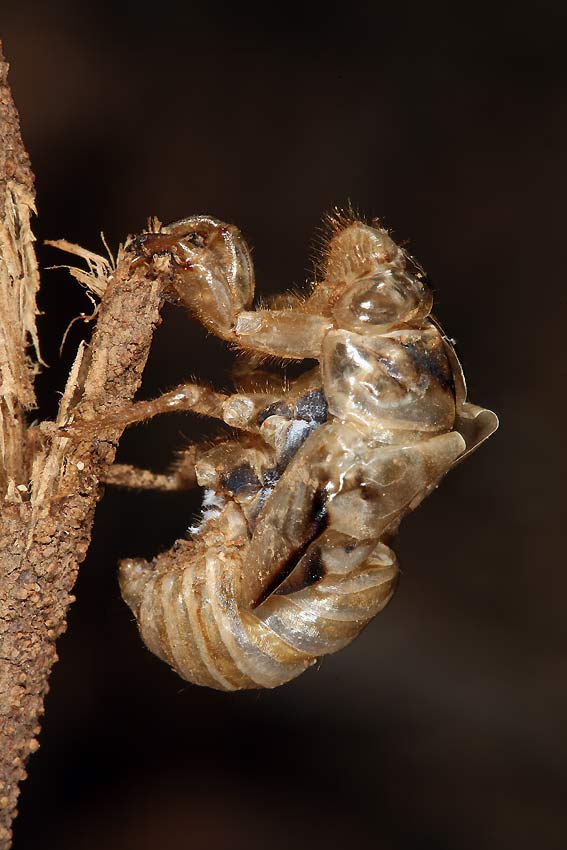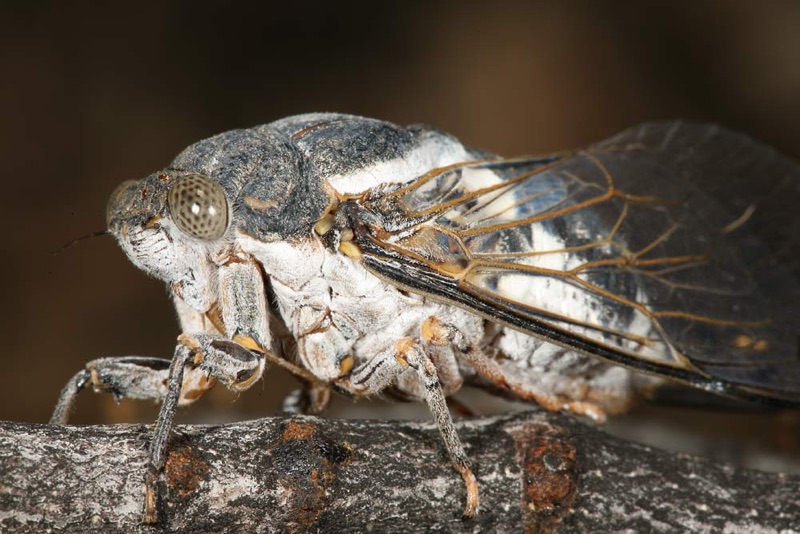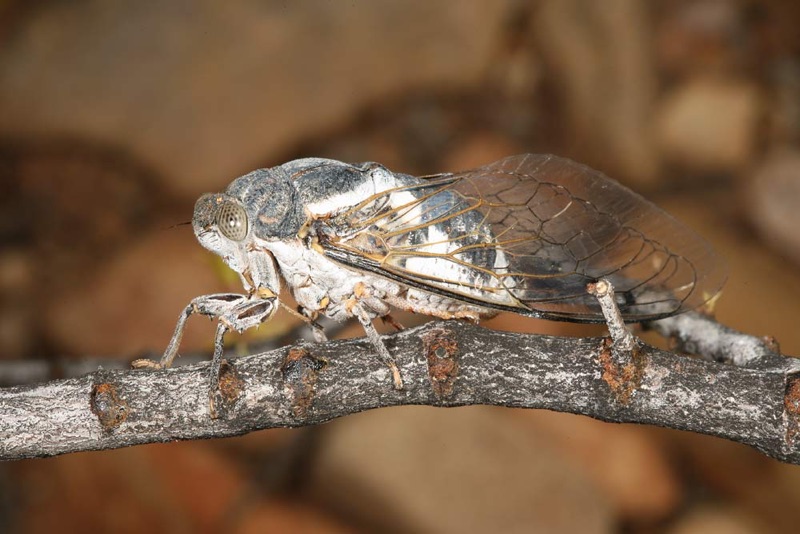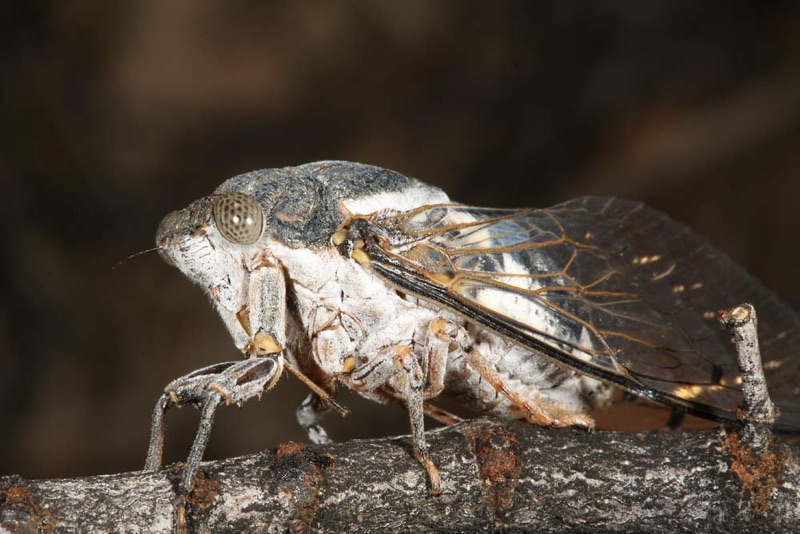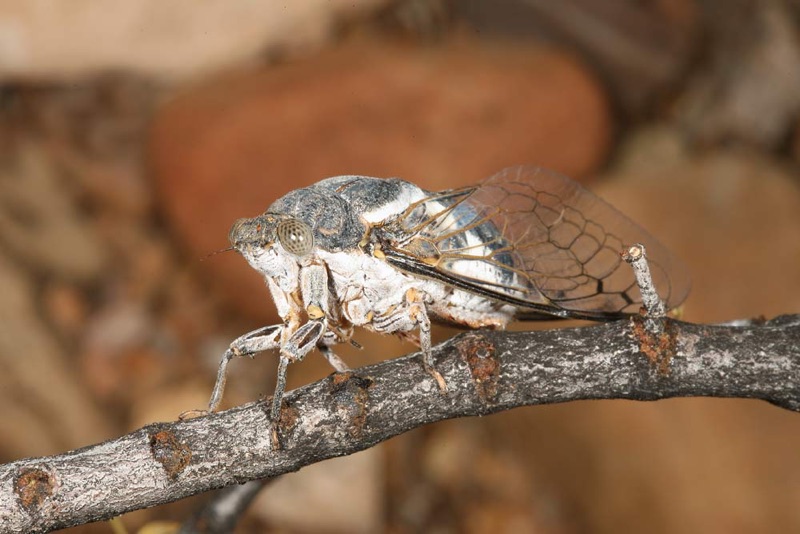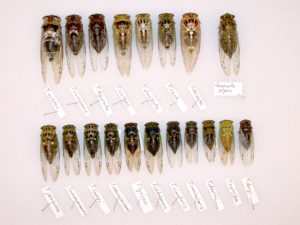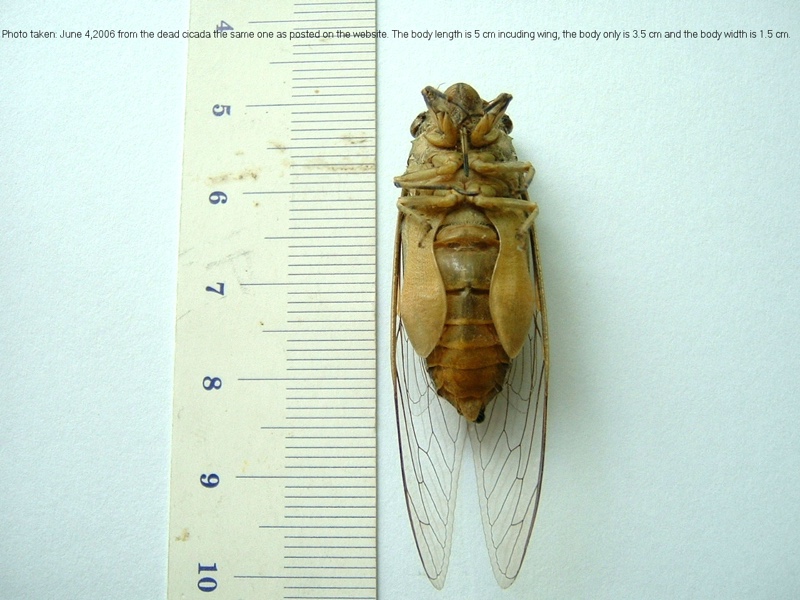In a few weeks you might see some Magicicada stragglers in areas that saw the Brood X emergence back in 2004. If you see any, let us know.
Update: some exciting news in the comments (before I accidentally deleted the original article):
Our 2006 straggler hunt has been very successful— much more successful than our 2005 Brood XI hunt.
Our group found M. septendecim (XIII), M. tredecassini (XIX), M. tredecim, M. neotredecim, M. tredecassini, and M. tredecula (XXIII), and unidentified nymphal skins, as well as a possible M. cassini (X) straggler— all on a 3-day Midwestern trip. Although most sightings consisted of isolated or small numbers of individuals, two emergences— one at Moody Cemetary in Greene-Sullivan State Forest, Indiana (mostly M. neotredecim), and one at the Vectren Energy plant entrance, near Yankeetown (east of Evansville) IN (mostly M. tredecassini) were substantial enough that there were periods of continuous calling. Not bad for an “off” year!
Complete records will be incorporated into the Magicicada database on Cicada Central as soon as some server issues are solved. If you have records that you’d like to put in the database, send the details (species present, approximate numbers of individuals), the complete locality info (including lat. and lon. if you have it), the date, and your complete name to me at the University of Connecticut (email is just firstname.lastname@uconn.edu).
John Cooley
Cicada Central.
